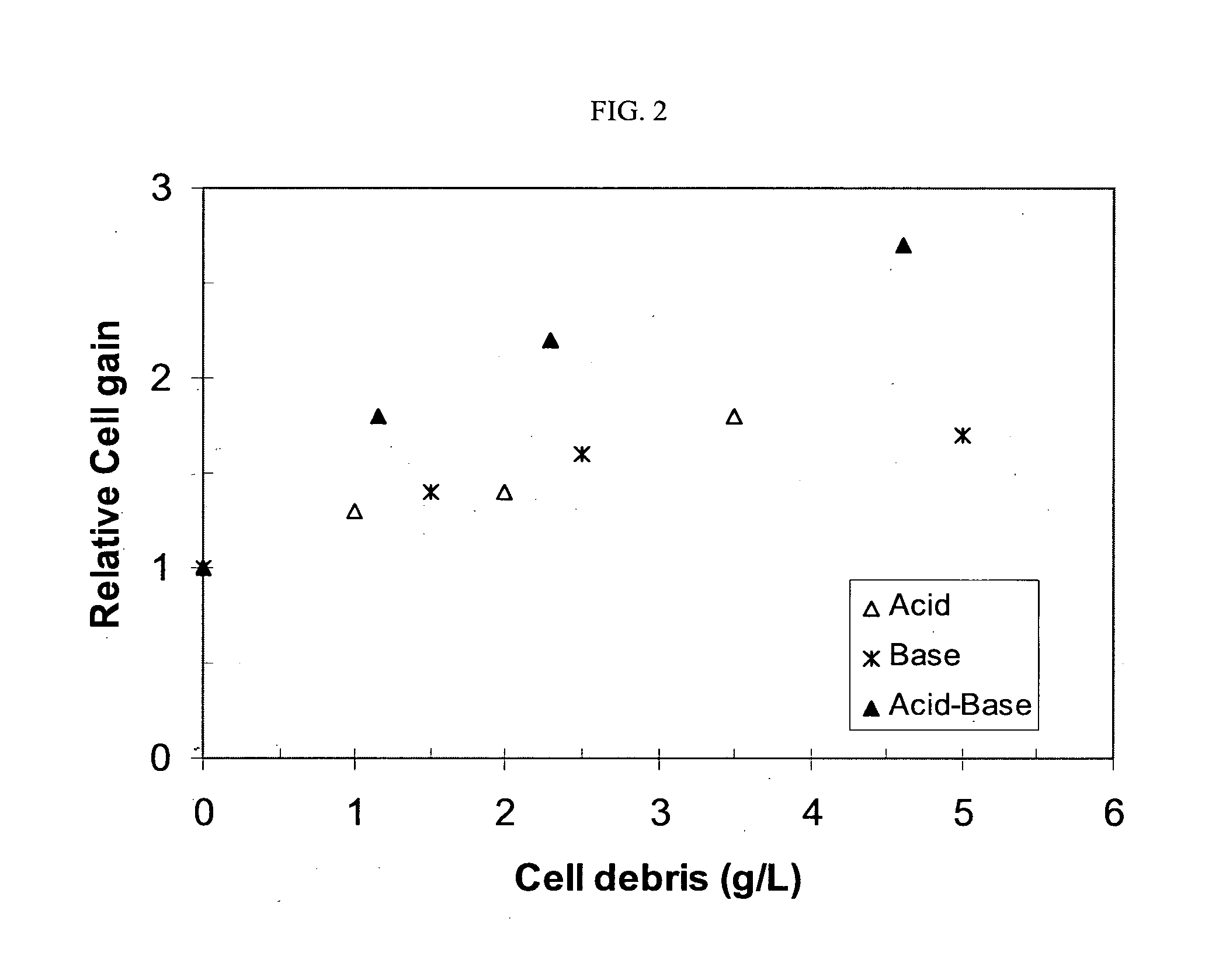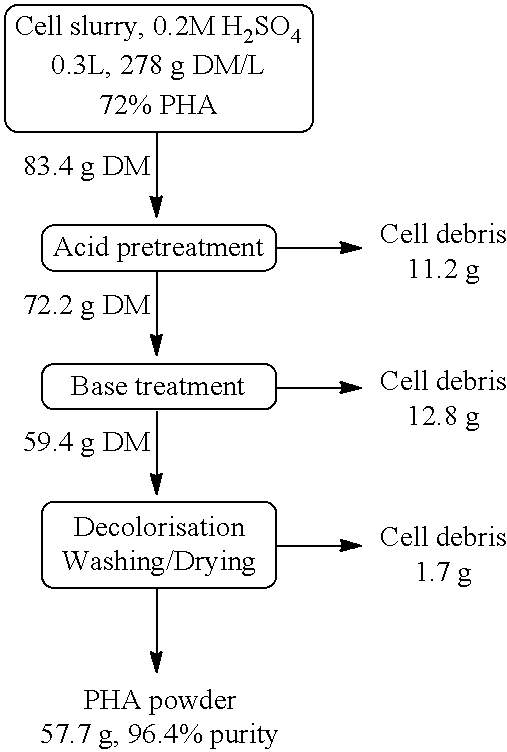Using cell debris generated from pha recovery for enhanced cell growth and biopolyester formation
a technology of pha recovery and cell debris, which is applied in the direction of fertilization, etc., can solve the problems of disposing, achieve the effects of improving yield, increasing cell growth and pha synthesis yield, and being easy to assimila
- Summary
- Abstract
- Description
- Claims
- Application Information
AI Technical Summary
Benefits of technology
Problems solved by technology
Method used
Image
Examples
case 1
Acidic Cell Debris Solution (ACDS)
[0046]An acidic cell debris solution containing 38 g / L of soluble solids was used in this experiment. Predetermined amount of ACDS was added into the flasks to give different ratio of cell debris to glucose at 0, 10, 20 and 25% of sugar, respectively. Duplicates without cell debris were run in parallel as experimental controls. As shown in FIG. 2, the cell debris is clearly beneficial to cell growth and PHA synthesis. The benefits are statistically significant in comparison with two controls. First, the cell debris leads to a faster cell growth rate than the controls in the first 24 hours. Secondly, the cell debris can also be used as an extra carbon source generating more cells than controls in 48 hours. Thirdly, the cell debris has the same positive effect on PHA synthesis. Fourthly, there is an optimal ratio of cell debris to glucose (10% w / w in this case). Too much cell debris could inhibit cell growth and PHA formation as shown in FIG. 2.
[0047]...
case 2
Acid-Base Cell Debris Solution (ABCDS)
[0048]In the same flask cultures above, an acid-base cell debris solution (48.5 g / L of soluble solids) was added to give different ratios of cell debris to glucose (0-40 wt %) as shown in Table 3. In comparison with the controls of no cell debris added, the concentrations of both cell mass and PHA content were substantially increased. The relative yields were increased by 100-300%. No inhibitory effect of acid-base cell debris was observed, probably because of the digestion of the inhibitors in alkaline treatment.
TABLE 3Effect of acid-base cell debris on cell growth and PHAformation in 48 hours.Cell DebrisDebris / sugarCell massPHAPHA(g / L)(wt %)(q / l)(wt %)(g / L)Yx / sYp / s0.002.1450.951.01.01.159.44552.21.82.252.3018.84.5602.72.12.754.6038.85.6613.42.63.50
case 3
infi Three Types of Cell Debris as Growth Nutrients
[0049]In the same flask cultures above, three types of cell debris solutions (ACDS, BCDS and ABCDS) were added to different concentrations of cell debris. The cell mass concentrations relative to the controls without cell debris are compared after 48 hours cultivation as shown in FIG. 2. The relative cell gain reported in FIG. 2 is the ratio of a cell mass concentration to the control. The nutritional effect of ACDS and BCDS on cell growth is very similar, while ABCDS has a better nutrient value than do ACDS and BCDS.
PUM
| Property | Measurement | Unit |
|---|---|---|
| temperature | aaaaa | aaaaa |
| density | aaaaa | aaaaa |
| pH | aaaaa | aaaaa |
Abstract
Description
Claims
Application Information
 Login to View More
Login to View More - R&D
- Intellectual Property
- Life Sciences
- Materials
- Tech Scout
- Unparalleled Data Quality
- Higher Quality Content
- 60% Fewer Hallucinations
Browse by: Latest US Patents, China's latest patents, Technical Efficacy Thesaurus, Application Domain, Technology Topic, Popular Technical Reports.
© 2025 PatSnap. All rights reserved.Legal|Privacy policy|Modern Slavery Act Transparency Statement|Sitemap|About US| Contact US: help@patsnap.com



